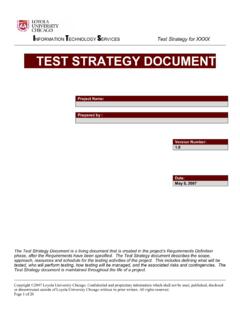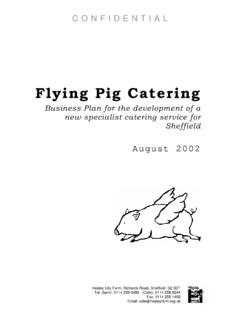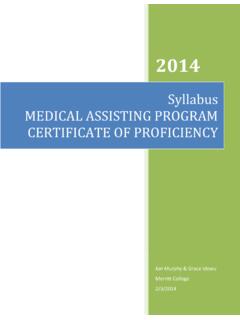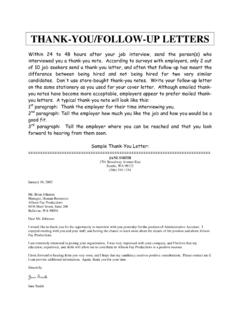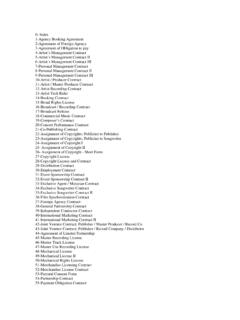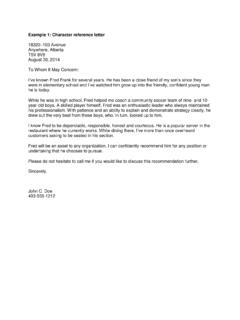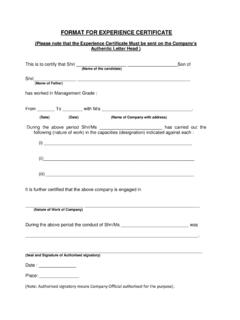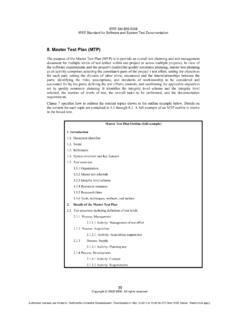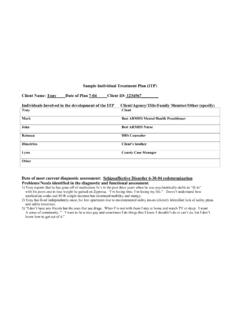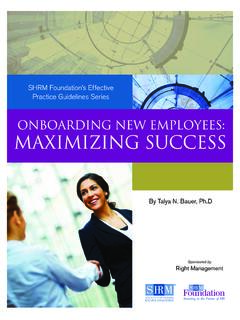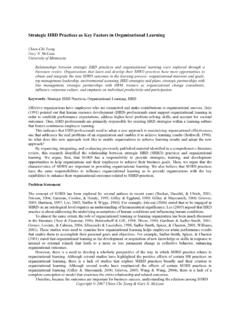Transcription of Guide to Preparing a Learning and Development Strategy …
1 Guide to Preparing a Learning & Development Strategy September 2011 Guide to Preparing a Learning and Development Strategy1 AcronymsCoPsCommunities of PracticeCREC omprehensive Review of Expenditure CSTDCC ivil Service Training and Development CentreC&AGComptroller and Auditor GeneralHRHuman ResourcesHRMH uman resource ManagementHRSH uman resource StrategyICTI nformation Communication TechnologyITInformation TechnologyL&DLearning and DevelopmentLGMSBL ocal Government management Services BoardMACM anagement Advisory CommitteeORPO rganisational Review ProgrammePMDSP erformance management and Development SystemROIR eturn on InvestmentTNAT raining Needs AnalysisGuide to Preparing a Learning and Development Strategy2Ta ble of ContentsPART 1 L&D Strategy Development the Strategy the Conformity with the L&D of the L&D 2: L&D Strategy 1 of the L&D about Learning and 2 -Identifying Learning and Development L&D 3 -Addressing Learning and Development for 4 and , Actions and and A: Training B: Suggested Layout for the L&D C: Sample L&D D: Five Levels of E: Sample Objectives, Actions and to Preparing a Learning and Development Strategy3 PART 1 OverviewGuide to Preparing a Learning and Development Strategy4 OVERVIEWB ackgroundASteering Group comprising a number of Personnel Officers, a representative from the Local Government management Services Board (LGMSB) and representatives from theCivil Service Training and Development Centre (CSTDC), Department of Public Expenditure and Reform, developeda high-level Learning and Development Framework forthe Civil Service covering the period 2011 2014.
2 The purpose of this Framework is to give direction and support and to make recommendations to Departments, Offices and Agencies on their approach to staff Learning and Development in a rapidly changing environment over the medium term, having regard to the current economic climate. Under the Learning and Development Framework for the Civil Service 2011 2014, Departments1are required to prepare a Learning and Development (L&D) Strategy internally which sets out the key Learning and Development objectives and actions as proposed under the Frameworkwhich include: Prioritise business needs & align Business, HR and Learning Strategies Analyse L&D needs Develop strategies for addressing L&D needs Evaluate L&D Strengthen Ethics and Governance Promote strong Financial ManagementThese guidelines were developed by the CSTDC to assist Departmental HR/Training Units to prepare their own L&D Strategy and implement the recommendations set out in the Framework. They are not prescriptive and some Departments may find it more efficient to review and update a previous Strategy document rather than develop a new format.
3 This is acceptable provided the key objectives and actions in the Learning and Development Framework for the Civil Service 2011 2014 are reflected. Target AudienceThis document is aimed at: those responsible for developing and implementing a Learning and Development Strategy as set out in the Learning and Development Framework for the Civil Service 2011 2014 Personnel Officers and those ultimately responsible for human resource management (HRM) Units, Learning and Development Unitsand strategic Planning Units The L&D StrategyThe L&D Strategy is a forward looking document setting out how L&D will support the achievement of the Department s HR and strategic goals and contribute to Departmental effectiveness over the coming years. The primary objective for developing the Strategy is to explore and select options for addressing Learning and Development needs. 1 All references to Department should be taken to include Offices and AgenciesGuide to Preparing a Learning and Development Strategy5L&D Strategy Development ProcessChoosing the most appropriate vehicles for addressing Learning and Development needs involves an iterativeprocessof research, consultation and analysis.
4 It is essential to planin advance about what research needs tobe conducted and who should be consultedor engagedin developing the Strategy . In addition, consideration should be given at an early stage to the techniques, methods, approaches and timetables that will be used for gathering information and exploring the issues. The data and ideas that are gathered through research and consultation should be analysed as partthe decision-making process and incorporated in the Strategy as appropriate. Developing the StrategyAs part of the process of developing an L&D Strategy , Departmentsshould take a critical look at the current L&D policies and practices that are in place across all business units. This should befollowed by an examination of the level of joined up thinking in the L&D and HR areas and the extent to which outputs/outcomes from L&D activities can be traced to some specific aspect of the overall corporate Strategy . To be effective, the L&D Strategy should be internally consistent and be mutually reinforcing with other strategies across the Department.
5 It should be vertically and horizontally integrated. Vertical integrationmeans integrating the L&D Strategy with the overarching HR Strategy and with business Strategy at corporate and business unit integrationmeansintegrating L&Dactivity with other HR practices so that there is consistency across the whole HR area with all its activity supporting Departmentalgoals. The L&D Strategy should also be aligned with the L&D Framework for the Civil Service 1 is a graphical representation of strategic 1: strategic AlignmentKey DocumentsThe Department s Statement of Strategy and the HR Strategy are key documents which should influence the Development and content of the L&D addition, the Training Needs Analysis (TNA) setting out the specific L&D requirements of the Department should be taken into account in devising the L&D Strategies. The TNA findings should be referred to in the Strategy . Statementof StrategyHRMS trategyLearning and Development StrategyLearning and Development Framework forthe Civil Service2011 -2014 Guide to Preparing a Learning and Development Strategy6 Any other relevant documents in the Department should also be considered to ensure horizontal integration.
6 These may include: Divisional Business Plans Section Plans Customer Service Plans Corporate Procurement Strategy /Plans IT Strategy /Plans Training PlansLearningTheoryLearning theory should be taken into account in developing L&D strategies. David Kolb2is renowned for his theory that Learning is based on a four-stage experiential Learning cycle. This Learning cycle starts with the learner having a concrete experience' being actively involved in a task. The second stage in the cycleis that of reflective observation . This means stepping back from the task and reviewing what has been done and experienced. The third stage, abstract conceptualisation , is the process of making sense of what has happened and involves identifying patterns, connections and relationships in different situations. The final stage of the Learning cycleis putting the Learning into practice through active experimentation . This active experimentation creates new Learning experiences and so continues the Learning 2: Kolb s Learning CycleAccording to Kolb s model, the ideal Learning process involves the application of all four stages in response to situational demands.
7 2 Kolb, David(1984). Experiential Learning : Experience as the source of Learning and Development . Englewood Cliffs, NJ: to Preparing a Learning and Development Strategy7 Key StakeholdersThereare key people and groups who can influence the Strategy and others who will be affected by it. Senior management have a particular role to play in approving the Strategy and by supporting its roll-out throughout the Department. Staff can make a significant contribution in identifying and agreeing mechanisms to facilitate their leaning and Development , and by co-operating with the opportunities provided as the Strategyis implemented. The participation of key stakeholders is essential in securingsupport and buy-in for the implementation of the , representative groups should be identified at an early stage so that they can be actively involved in developing the to get a collective view on the key Learning and Development issues to be addressed in the L&D Strategy .
8 While everyone in the Department need not be involved in the consultation process, those consulted should be representative of the various stakeholders identified at The partnership structure may be used in this effort put into stakeholder consultation will be very worthwhilein the long term. Consultation enhances thequality of the decision-making process and can shape and improve the shared ownership of the Strategy results in greater commitment toits implementation. The consultation process also raises awareness of L&D generally and can help to promotea Learning culture within the Department. Training CycleThe Training Cyclerepresents a best practice approach to training, Learning and is a widely used model which involves a series of stages which are necessary to ensure that the training is effective. The Training Cycle is reproduced at Appendix takes account of the stages in the Training Cycle in suggesting what might be included under various Strategy TemplateThe templatein Part 2can be used to assist Departments in developing content for the L&D Strategy .
9 To aid drafting, some basictext is suggested which is highlighted in green boxes. In some cases this text will need considerable modification to take account of the specific mission and goals of the Department,and the strategic options which are available to achieve its business objectives. Completing the TemplateThe template is divided into four parts. Section 1 - Introduction: Thefirst section introduces the L&D Strategy . It provides essential information on how the L&D Strategy is aligned with other strategies and how it takes account of the environment in which the Departmentis the most part, the information required for this section can be gathered through documentary research and other secondary sources. Guide to Preparing a Learning and Development Strategy8 Section 2- Identifying Learningand Development Needs:This section sets out how the L&Dneedsof the Department are identified. It should be noted that in order to complete this section, a TNA will need to have been conducted and a TNA report produced containing the findings.
10 If this work has not yet been carried out, it should be commencedimmediately. This will require both secondary and primary research. Section 3- Addressing Learning and Development Needs:Section 3 sets out how the L&D needs will be addressed, including evaluation. Departmentswill need to consider what strategies are appropriate to address their specific needs identified in the TNA. Section 4- Implementation: The fourth section addresses implementation arrangements. Five appendicesare included at the end to provide supplementary information. Ensuring Conformitywith the L&D FrameworkThe template is designed to ensure conformity with the L&D Framework. In systematically completing and implementing the Strategy in accordance with this Guide and template,the first four objectives will have been addressed: Prioritise business needs & align Business, HR and Learning Strategies(section 1) Analyse L&D needs(section 2) Develop strategies for addressing L&D needs(section 3) Evaluate L&D(Section 3)The final two objectives will need to be addressed at various stages during the process.
